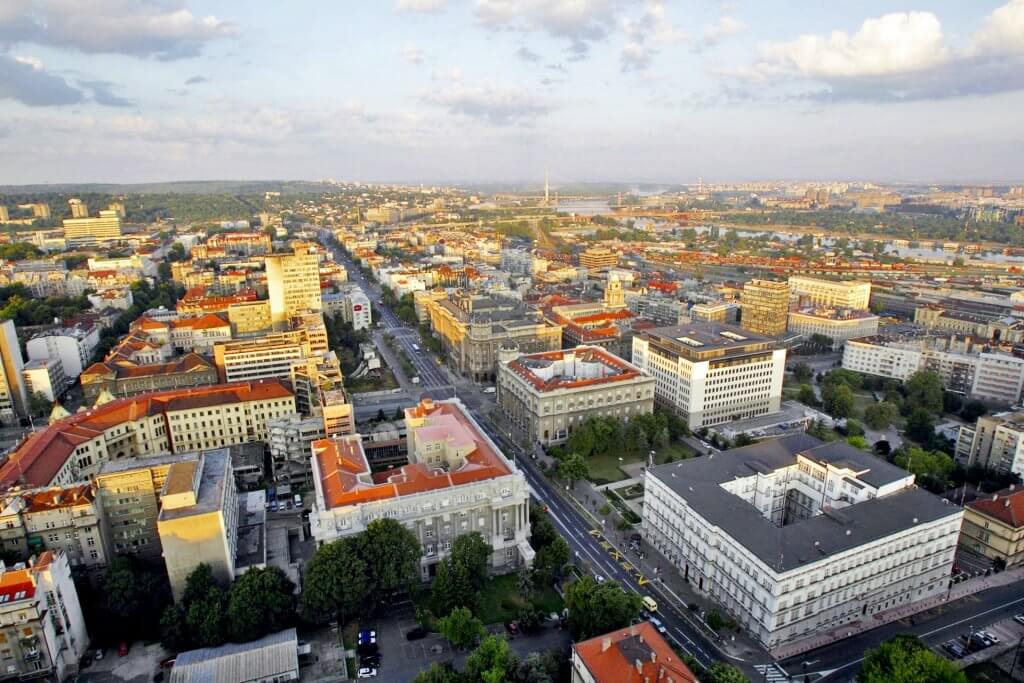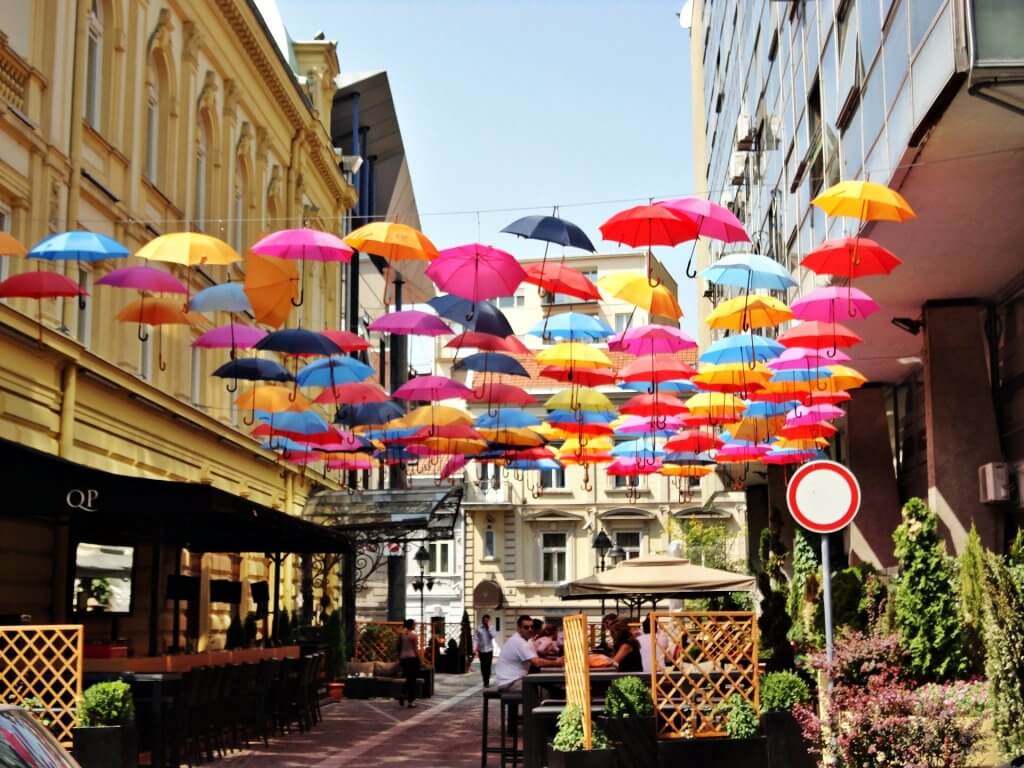Nothing describes Belgrade like the three words „Belgrade is Belgrade“ (in Serbian Belgrade means White City) that utter at the airport after coming home from abroad. Belgrade abounds in love, warmth and wonderment; we feel safe here and we’re happy to live in this city. If we haven’t made much of our lives, it is enough to say that we have managed to live in such a fine place as Belgrade – the unfulfilled dream of many provincials. Belgrade does not like having its picture taken. It hates to pose. It will not keep still. It does not do well in photographs – it always looks like some place else.
It is not Paris, which likes to cuddle with artists. It is not London, which ingratiates itself to photographers. It is not Rome, which bedecks itself with souvenirs. It is not Vienna, the perfect place for an engraving on an ashtray. It is not Moscow, which looks nice in a glass globe with drifting snowflakes. It is not Berlin, the golden bear, which can be turned into a beautiful key ring. It is not Budapest, which likes to have itself painted on the bottom of bowls of hot fish stew. It is not Istanbul with its gold teeth. It is not Athens, a stone paperweight for old manuscripts…
There are few things in Belgrade that I have not seen elsewhere. Perhaps only three: its rivers, its sky, and its people. Of these three ancient elements, the unique spirit of Belgrade is born.

Clouds scud across the sky where the Sava gives itself to the Danube, combining mists with eastern and western winds – that dramatic Belgrade sky that resembles a huge celestial battleground. The spiritual state of its inhabitants is portrayed in this sky at any moment of the day.
People who grew up on a stone hill beneath such an exciting panorama cannot be but broad of gesture, stormy of temperament and of changing mood. These people, who stay in their city despite everything, even as history destroys and crumbles it, covering the land with layers of leaves and remnants of previous settlements and past civilizations, such people are capable of building their city anew, in a relaxed and unpretentious way; they are capable of building a city of human proportions. It is as comfortable as a friendly pub; the town does not put fear in the hearts of visitors with its enormity but binds its visitors forever with a hundred invisible threads.
An aerial picture of Belgrade shows – as clear as the palm of your hand – its past, present, and future. Belgrade’s palm has calluses and scars: it gives a firm, friendly handshake; it has the strength of a dangerous fist, the softness of a caress.
Its fingers are roads leading into the wider world – ancient roads, imperial roads, rural paths and tracks, highways – and long white streams that cut across the sky.
Lines of character: the contours of ravaged Kalemegdan fortress.
Mounts of Venus: Banovo, Pašino, Julino, Labudovo, Petlovo, Topčidersko..
Life-line: long and frequently intersected with the scars of wars…
The line of the heart: the banks of the river islands Ada Huja, Ratno Ostrvo, Ada Ciganlija and Mala Ada…
The line of exceptional fortune: the course of its rivers.
Where is the heart of Belgrade?
It is everywhere and nowhere. It hides in the refined nonchalance of shoe cleaners on the streets, who say „Give me as much as you want!“, in the philosophically balanced relaxation of old men who have lived through so many wars; in the morning joke that breaks the gloomy mood of office-bound workers in trolley bus 11; in the friendship of waiters who happily sit down for a glass of beer with their guests at the „Čubura“ restaurant; in the hustle and bustle of streets in which you rarely feel like a stranger, regardless of where you come from; in the beauty of the graffiti on walls that no one ever paints, tinies, loves, insults, witticisms, football results, names…
The spirit of Belgrade lies concealed in the unique chaos of its and vegetable markets, and above all, in the supple walk of Belgrade women. Watching these women on the city streets is like seeing a fantastic modern ballet with no other sound than striking heels! Pale city girls who grow up suddenly, accustomed to city life and the yearning looks of passers-by; independent, cynical, audacious and polite at the same time, with the innate elegance of millionaires behind cunningly concealed poverty – it is upon them that newcomers feast their eyes until they disappear from sight, as if upon some secret signal, leaving the streets inconsolably barren and bare.

The spirit of Belgrade gives birth to daring vertical lines, out of which spring new city quarters and old quarters fall into ruin; it bridges rivers and clears away the rusted tangle of railway lines overgrown with grass to secure a better view of the rivers and the sky. It toys with architecture and the laws of town planning.
This city will never attract the uninquisitive collector of beauty, but it will do something completely different: it will arouse an almost physical pain of longing in those who have spent any time on its streets, even a few days, just as a photograph of a long-lost love can inflict mortal pain.
The plan of its streets becomes something akin to a topographical map of our hearts. This city of ours will bewitch us with its charm, but it will never reveal the secret of that strange love, a love that is beyond comprehension. We shall remain its willing prisoners forever, having chosen Belgrade for this one life from among the innumerable magnificent cities of the world.
Excerpt from book “A Guide to the Serbian Mentality” by Momo Kapor